A few weeks ago, one of our Assistant Curators of Collections Dr Lauren Padgett was auditing a box of souvenirs when she fortuitously came across two souvenir books relating to the 1931 Bradford Historical Pageant. As it’s the 90th anniversary of it taking place this month, on the 13th July, Lauren has written a blog to tell us more about it.
= 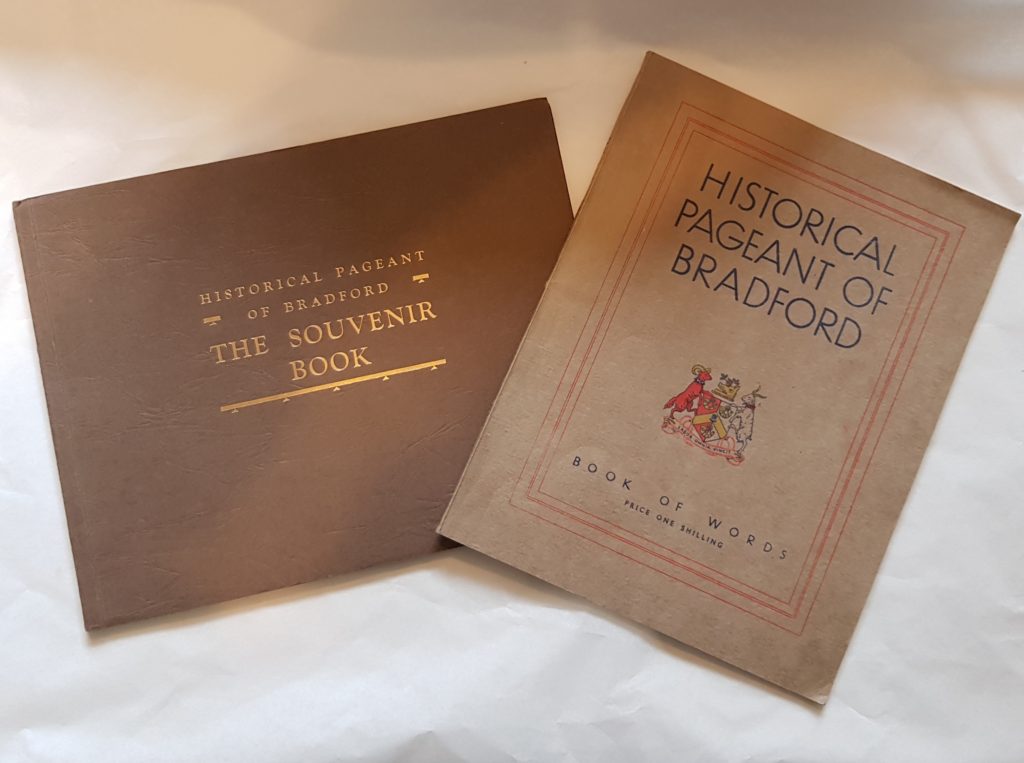
Historical pageants were staged in towns and cities up and down the country, mostly in the first half of the twentieth century. At these pageants, historical scenes relating to that particular place were re-enacted. It was a chance to rally and revel in civic pride. 1931 was an odd time for Bradford to be hosting an historical pageant. In the inter-war years, Bradford was feeling the global financial crisis; textile mills around the district were going bankrupt and closing causing unemployment and hardship. This may well have been one of factors that influenced the decision and impetus to host a pageant. It was hoped that the pageant would attract tourism, showcase what Bradford had to offer and give Bradford a much-needed boost, economically and in terms of morale.
Bradford had the famed Frank Lascelles, ‘the pageant master’, as organising director. Pupils at Bradford College of Art and Crafts produced the scenery and back-drops for the scenes. According to research by Ayako Yoshino, Bradford’s pageant was quite technologically advanced, being ‘one of the first major pageants to use electricity extensively. Telephone lines were set up to carry messages more quickly to the large number of participants and microphones were used to make the outdoor drama easier to hear. . . twenty large electric floodlights extended the finale of the pageant into the evening.’
Just a few days before the pageant was due to start, it was announced by the Woolcombing Employer’s Federation that there would be a wage reduction affecting 8,000 workers. In response to this, workers decided to go on strike from the 13th July, the day the pageant was opening. Organisers and the Mayor of Bradford were worried that this would overshadow the pageant and hoped a settlement could be negotiated to avoid strike action. As it happened, Bradford workers did not strike, but Shipley workers did. The pageant ran for one week, from 13 to 22 July, hosted in Peel Park. The opening performance was inaugurated by H.R.H. Prince George and his speech can be viewed in the British Pathé film: https://www.youtube.com/watch?v=cB7lTobCVNs . As we have come to expect of a British summer, it was marred with rain on the first day which persisted most of the week. The pageant performance was split into episodes made up of several scenes covering different periods of Bradford’s history in chronological order. While the episodes were performed in Peel Park, some pageant activity took place in other spaces around Bradford, including the grounds of our Bolling Hall Museum – the postcards below show photographs of Pageant Queen outside Bolling Hall. Performers wore costumes made from locally made fabrics – like live manikins, they showcased and advertised Bradford’s textile industry. It was thought that 30,000 people participated with pageant and a healthy profit was donated to local hospitals.
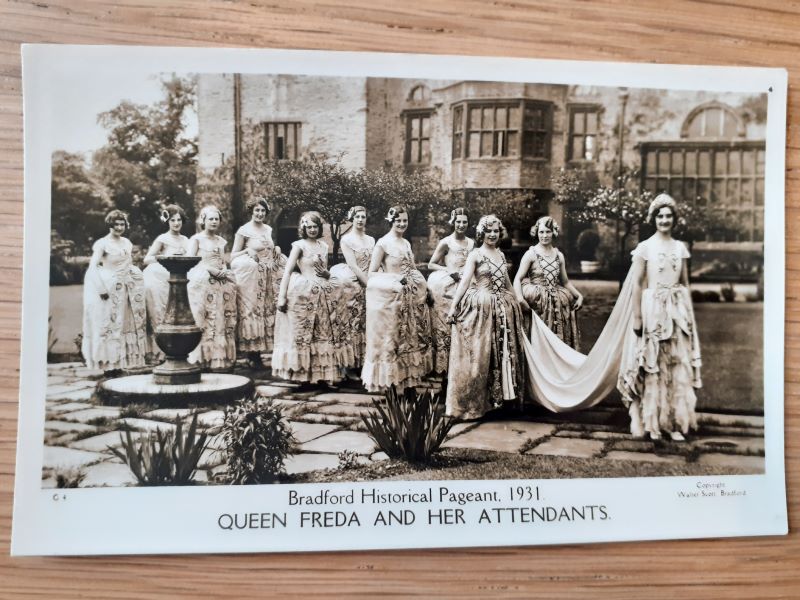
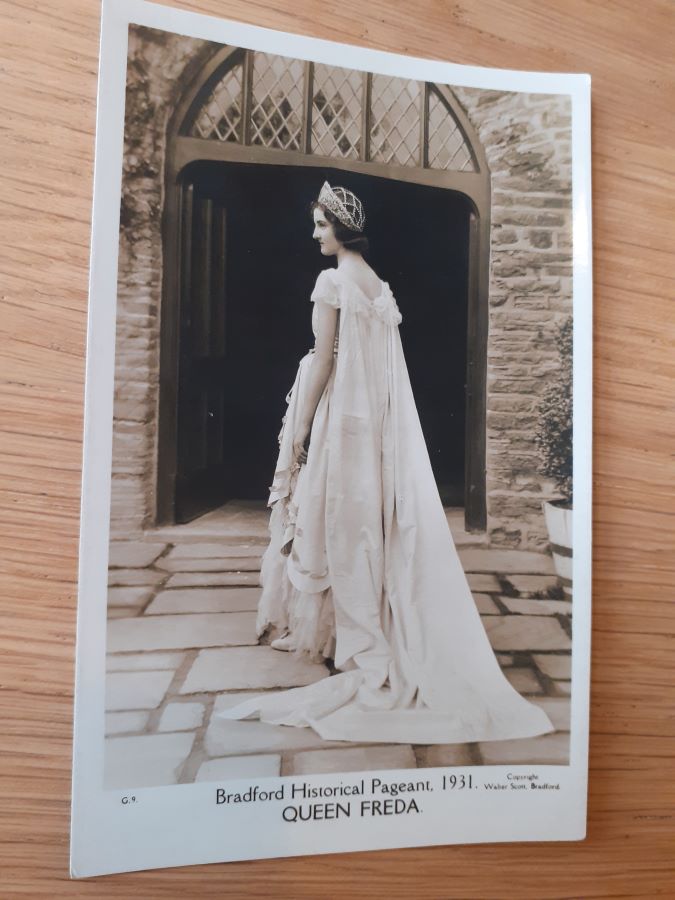
In Bradford Museums and Galleries’ collection we have some objects relating to the pageant: souvenir badges, books and postcards. The postcards, some showing photographs of the performances and others reflecting historical people who made an appearance in the episodes, give an illustrated insight into which aspects of Bradford’s history were reenacted.
Episode 1 ‘The Coming of the Romans’ depicts the fighting between the Brigantes tribe (which occupied Bradford) and the invading Romans – a snippet of this can be seen in the British Pathé film on Youtube. Episode 2 ‘Paulinus in Bradford Dale’ represents the conversion of Anglo-Saxons to Christianity in seventh-century Bradford. Episode 3 ‘Bradford in Norman Times’ features individuals who were bestowed land and property in Bradford (including Bolling Hall) by William the Conqueror, such as the de Lacey family. It also includes Robin Hood, who ‘is supposed to have been associated with many exploits in this part of Yorkshire, and to be buried at Kirklees’, and the legend of the Bradford Boar. Episode 4 ‘Bradford in Plantagenet Times’ recounts the sacking of the North, including Bradford, by the Scots. Episode 5 ‘Bradford in Stuart Times’ covers the English Civil War, focussing on the Battle of Adwalton Moor, the Second Siege of Bradford and Bolling Hall’s ‘Pity Poor Bradford’ ghost. Episode 6, the final episode, about ‘Bradford of the Industrial Revolution’ acknowledges the opening of Bradford’s Piece Hall, showcases Bradford’s tradition of the Bishop Blaise Procession on St Blaise’s Day, covers child labour in mills and the local Luddite activity and the local election of 1832.
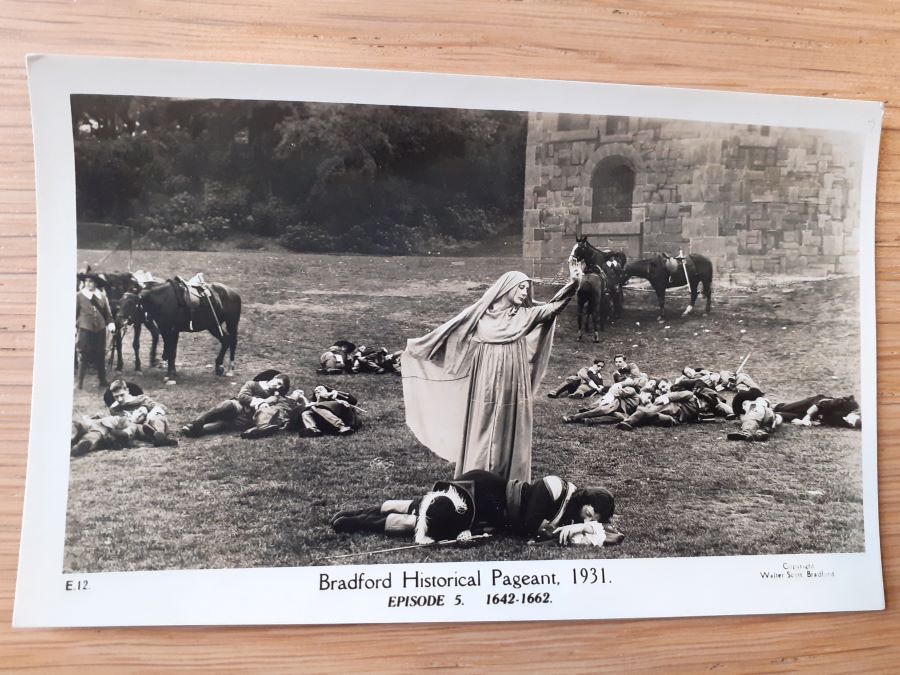
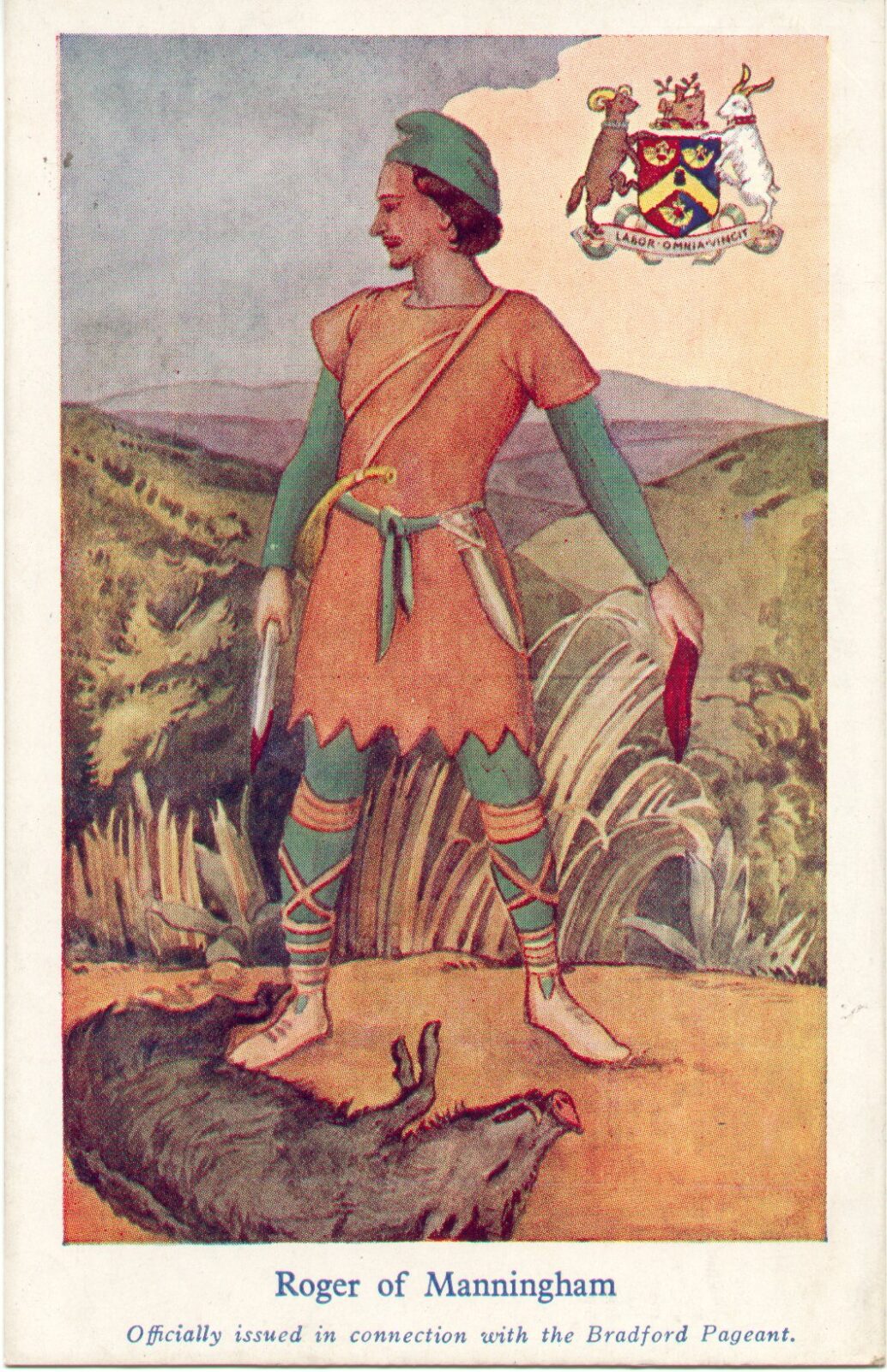
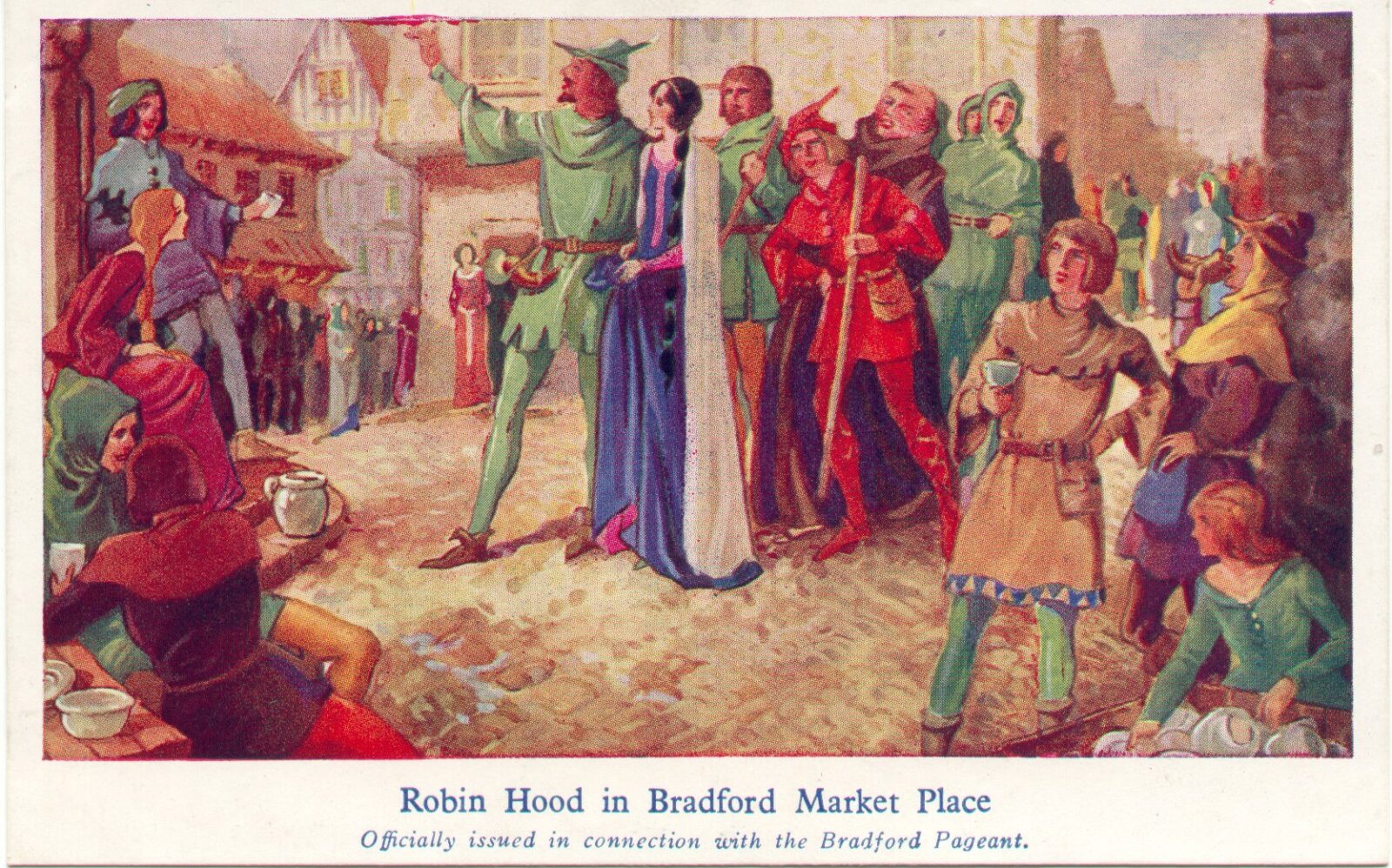

Interestingly, other cities and towns opted to stage sanitised or whimsical versions of their history, whereas Bradford dared to touch on the subjects of the divisive English Civil War, controversial child labour and corrupt politicians and politics.
90 years on from this, Bradford is again positioning itself to showcase what the Bradford District has to offer as it enters the competition to host City of Culture in 2025.
For more information about the ‘The Bradford Pageant of 1931’, please read Ayako Yoshino’s article on the Historical Pageant’s website: https://historicalpageants.ac.uk/featured-pageants/bradford-pageant-1931/